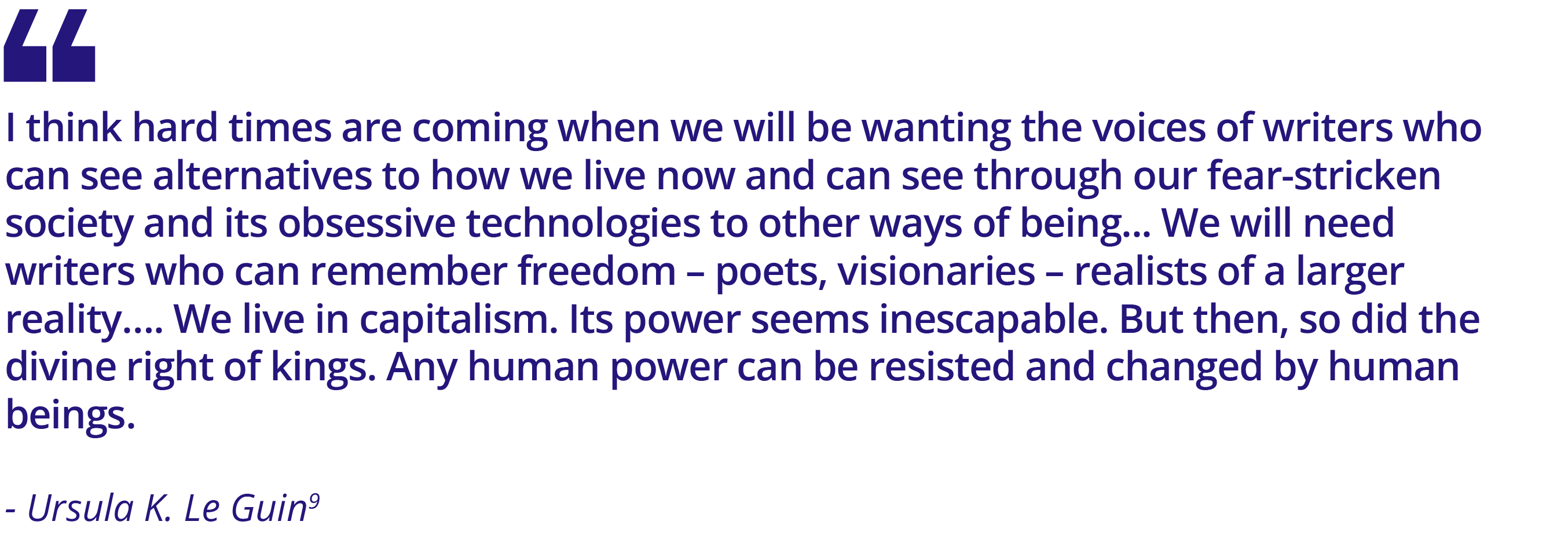Theme 3: Identity, Power, and Transformation

Intersectionality is linked to the recuperation of power within – the strength we can find in re/claiming our whole self as valuable; power with – finding others who are doing the same and who see us; and power for and power to – defining and working toward a vision of inclusive liberation where no part of us is left behind. This understanding can shift our analysis of what’s wrong, what is needed and how we are going to get there together.
Dealing with past legacies and present experiences of oppression can be difficult, but there is joy and celebration on the path as we affirm who we are and walk toward the world we want. We can all think of music, film, art, song, or poetry that has fed our spirit and nourished dreams in which we are all whole and all free.


Activity 7: Liberation, solidarity, and transformative power
Materials: If you created a timeline earlier, use it for reference here. If not, the group generates examples from their own knowledge.
Step 1. Identity, solidarity, and history – the timeline
Plenary: Ask each person to think about a moment in history when people – especially unlikely allies – came together in solidarity across identities and across movements to build collective power to create change. It could be something local or from another part of the world. Brainstorm some examples and record them on sticky notes or a flip chart.
Choose a few examples that seem to have the most resonance and break into small groups, each with an example.
Small groups: Discuss:
- What was the significance of this instance of solidarity and collaboration?
- On what grounds did the different groups come together and what activated their collaboration?
- Did the two groups have a prior connection and if so, what was it? If not, what enabled them to come together in this instance?
- What made the collaboration and solidarity work?
- What tensions did the groups need to manage in order to collaborate?
Plenary: Groups take turns to share insights.
- In these examples, what difference did it make to work with unlikely allies?
- What do you take away about working across difference and what makes it possible?
Step 2: Dreams of intersectional liberation
Plenary: To create the future we want, we need to imagine it. Every time we describe the world we want, someone or something tells us that this dream is impossible. But everything is impossible until we make it happen. Imagine those who organised for liberation over history – against chattel slavery, against colonial powers, for gender equity, for human rights, for our lands and planet, for the vote, for self-determination, for the right to love who we love. Surely these struggles seemed (and in many cases, can still seem) impossible. But we know that every gain for social justice has been achieved in the face of that impossibility.
Read out the quotes by Walidah Imarisha and Ursula K. Le Guin. Discuss:
- What do these quotes convey about imagining our way into a new future?
- How are we constrained by the ‘possible’?
- What is something you long for that is currently deemed ‘impossible’?
What might the future lead to? Screen and discuss a future-inspired video or film clip such as M4BL: Black Futures: An Ode to Freedom Summer.
Small groups: Imagine a story of transformation 50 years from now when people came together to create change. How are things in that future? How and why did people come together? What did they do? Why did it work?
Find a creative and inspiring way to share that story with those here in the present in under five minutes, perhaps a skit, set of drawings, or Wikipedia entry from the future
Plenary: Groups tell or present their stories. After each one, discuss:
- What moved you?
- What door in your mind, heart, or body opened at the prospect of that future?
- What inspired you?
Summarise the activity. Focus on:
- The importance of radical – and intersectional – imagination in connecting us across the divisions, beyond the sense of scarcity that keeps us fearful and toward our boldest vision for the future.
- The importance of telling these stories, carrying these narratives into what we say and do, and how we work.
- The connections between intersectional politics, radical imagining, transformative power, and collective action.
Download this activity.
As much as these ‘categorisations’ of people in terms of identities linked to gender, race, or class and so on are used by people with resources and power as the basis for oppressing and violating those people, these identities are also a strong basis for groups of people organising to oppose and resist the inequality and marginalisation that they experience.
______________________________
8 Interviewed in the Anti-Racism Daily, February 23, 2023. Walidah is a writer, poet, activist, and academic in Portland, Oregon.
9 Ursula K. Le Guin, acceptance speech as Medallist for Distinguished Contribution to American Letters. The Guardian.
